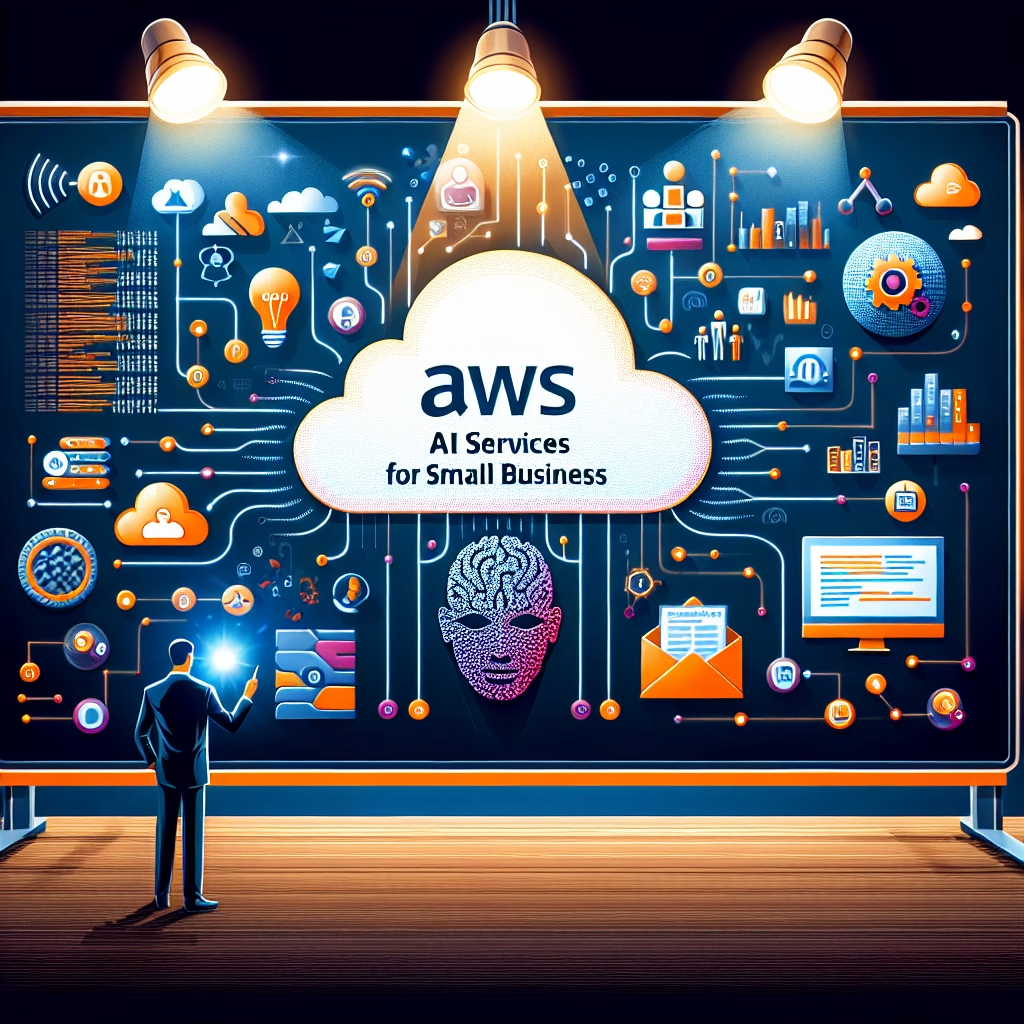AWS AI Services for Small Business
Summary:
AWS AI services offer small businesses pre-built artificial intelligence tools that eliminate the need for coding expertise or massive data science teams. These services—like chatbots, image analysis, and language processing—help automate workflows, personalize customer interactions, and extract insights from data. This article explains which AWS AI tools are most practical for small businesses, their real-world use cases, cost-effectiveness, and scalability requirements. We’ll balance their strengths (speed, AWS integration) against limitations (learning curve, cost monitoring) to help novices make informed decisions about adopting AI.
What This Means for You:
- Democratized AI access without coding: AWS services like Lex (chatbots) and Polly (text-to-speech) use intuitive consoles, letting you deploy AI features faster than building custom models. Focus on configuring workflows, not machine learning theory.
- Start small, scale affordably: Begin with a specific task like document processing using Textract ($0.0015/page). Use AWS’s pay-as-you-go pricing to test AI before heavy investment. Track usage via AWS Cost Explorer to avoid surprises.
- Hyper-targeted automation opportunities: Automate customer FAQs with Lex, moderate user-generated content with Rekognition, or generate product descriptions using Bedrock. Prioritize repetitive, high-volume tasks for quick ROI.
- Future outlook or warning: AWS continuously adds services like Q (business-specific chatbots) but avoid “AI sprawl.” Align tool selection with existing AWS usage (e.g., S3 storage) to simplify architecture. Monitor data privacy laws as AI regulations evolve globally.
AWS AI Services for Small Business
Why AWS AI Fits Small Business Needs
Small businesses often lack resources for custom AI development, making AWS’s managed services ideal. With no upfront infrastructure costs and consumption-based pricing, AWS AI enables experimentation without significant risk. Services like Amazon Polly (text-to-speech) or Kendra (enterprise search) can be activated in minutes via the AWS Console or API, using pre-trained models refined by Amazon’s vast datasets. Integration with AWS’s ecosystem (e.g., Lambda for serverless automation) allows seamless workflow enhancements.
Top AWS AI Services for Small Teams
Amazon Lex: Build conversational chatbots for customer support or internal queries. Lex powers Alexa, offering advanced natural language understanding (NLU). A small e-commerce business can deploy a Lex bot to handle order tracking, reducing call center volume by 30–60%.
Amazon Rekognition: Analyze images and videos for content moderation or inventory management. A retailer could use Rekognition to automatically tag product images or detect inappropriate user uploads, with accuracy rates exceeding 95% for common objects.
AWS Textract: Extract text, forms, and tables from documents like invoices or receipts. Automating data entry from 500 monthly invoices using Textract could save ~40 hours/month at a cost of under $10.
Amazon Translate: Real-time language translation for customer communications or multilingual content creation. Supports 75+ languages, ideal for businesses expanding globally.
Amazon SageMaker JumpStart: Pre-built models for predictive analytics (e.g., sales forecasting) with minimal setup. Requires basic data science knowledge but avoids model-building from scratch.
Strengths: Speed, Scalability, and Ecosystem
AWS AI’s biggest advantage is deployment speed—tools like Lex require no GPU provisioning or model training. Its pay-per-use model aligns with fluctuating demand, scaling during peak seasons without capacity planning. For businesses already using AWS (e.g., S3 for storage), adding AI services reduces integration complexity, leveraging existing IAM roles and security protocols.
Limitations and Cost Control
While user-friendly compared to raw AI development, services like Kendra (search) or Forecast require configuration expertise. Without clear scope, costs can escalate—e.g., Rekognition charges $0.001 per image analyzed, which adds up at scale. Small businesses should:
- Set billing alarms for AI services in AWS Budgets
- Use AWS Free Tier (e.g., 5,000 Textract pages/month for 3 months)
- Combine AI with automation tools like Step Functions to avoid redundant processing
Real-World Use Cases
Local Bakery: Uses Lex to handle cake customization requests via Facebook Messenger, reducing email backlog by 70%.
Healthcare Clinic: Deploys Textract to digitize patient intake forms, cutting data entry costs by $1,200/month.
Online Retailer: Implements Rekognition for automated product catalog tagging, improving search relevance and sales conversions by 15%.
When to Consider Alternatives
AWS AI may not suit businesses needing highly customized models or those with strict data residency requirements (some services process data in specific regions). Alternatives like Google’s Vertex AI offer stronger AutoML tools, while Azure AI excels in Microsoft ecosystem integration.
People Also Ask About:
- “Is AWS AI services cost-effective for tiny businesses?” Yes, but prioritize services with Free Tier allowances (e.g., 12 months free for 5,000 Lex text requests/month). Monitor via Cost Explorer and start with low-volume use cases like processing 100 documents/month with Textract (~$0.15).
- “Can I use AWS AI without technical skills?” Partially. Services like Rekognition or Polly have simple consoles, but integrating them into workflows may require AWS fundamentals. Use AWS’s Learning Library for free courses on foundational architecture.
- “Which AWS AI service is best for customer service?” Lex for chatbots (integrated with Amazon Connect for call centers) and Kendra for instant answers from internal documents. Combine both for 24/7 automated support.
- “How secure is my data with AWS AI?” AWS adheres to compliance standards like HIPAA and GDPR. Data processed by AI services is encrypted and isn’t used to train Amazon’s models without explicit consent.
Expert Opinion:
Small businesses benefit most by treating AWS AI as task-specific accelerators, not silver bullets. Prioritize services with measurable ROI—like automating document processing or basic customer queries—before experimenting with advanced AI. Ensure data governance policies align with service-specific data handling, particularly for sensitive industries. As generative AI evolves via tools like Bedrock, rigorously evaluate output accuracy before customer-facing deployment.
Extra Information:
- AWS AI Services Homepage: aws.amazon.com/ai/ – Overview of all AI/ML services with use cases and pricing examples.
- Small Business AI Success Stories: AWS Case Studies – Filter by “AI/ML” and “SMB” for benchmarks.
- AWS Free Tier Calculator: aws.amazon.com/free – Track eligible AI service allowances to minimize initial costs.
Related Key Terms:
- Amazon Lex chatbot pricing for startups
- AWS Textract data extraction tutorial small business
- Rekognition content moderation API costs
- Best AWS AI services for e-commerce SMBs
- AWS AI Free Tier limits 2024
Check out our AI Model Comparison Tool here: AI Model Comparison Tool
*Featured image provided by Pixabay




